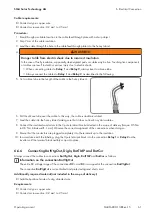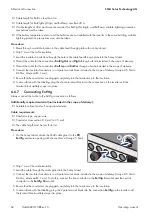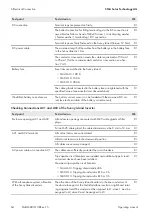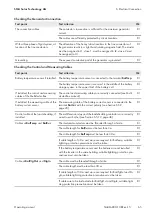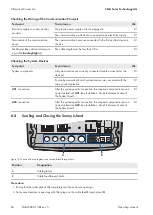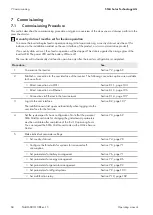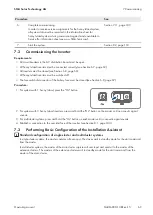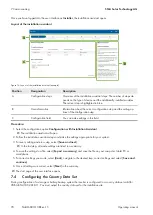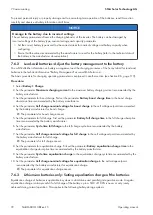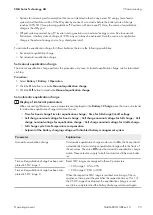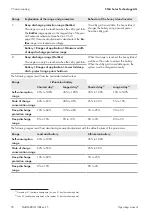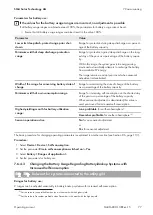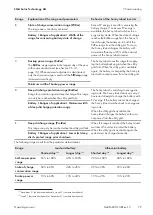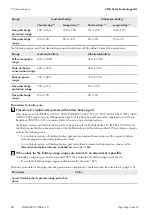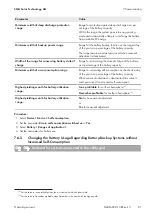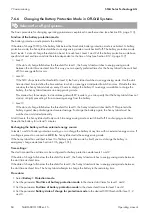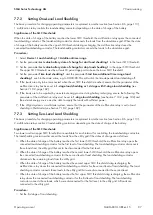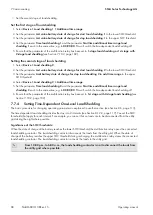
7 Commissioning
SMA Solar Technology AG
Operating manual
75
SI44M-80H-13-BE-en-15
The longer the days become, the more the SlfCsmp range increases automatically and the range for protection against
deep discharge (BatRes) decreases. The range for increased self-consumption reaches its maximum on the longest day.
This results in the seasonal progression of the ranges.
t
SOC
0 %
100 %
A
B
D
C
Winter
(Summer)
Summer
(Winter)
Winter
(Summer)
Figure 17: State of charge ranges of the battery according to the time of year (example)
Range
Explanation of the range and parameters
Behavior of the Sunny Island inverter
A
Self-consumption range (SlfCsmp)
6)
The
SlfCsmp
range applies to the shortest day of the
SlfCsmp
range is used and the
BatRes
range
increased accordingly.
The Sunny Island uses the battery for in-
creased self-consumption.
Battery > Ranges of application > Minimum width
of backup power range
B
State of charge conservation range (PVRes)
The range size is constant year-round.
Excess PV energy is used for conserving the
battery charge. If no excess PV energy is
available, the Sunny Island switches to en-
ergy saving mode. When the state of charge
reaches the BatRes range limit, the Sunny Is-
land charges the battery up to half of the
PVRes range from the utility grid. To do so,
the Sunny Island charges the battery with
maximum efficiency at 25% of the nominal
power of the Sunny Island inverter.
Battery > Ranges of application > Width of the
range for conserving battery state of charge
6)
This range can be adjusted for all battery types.

